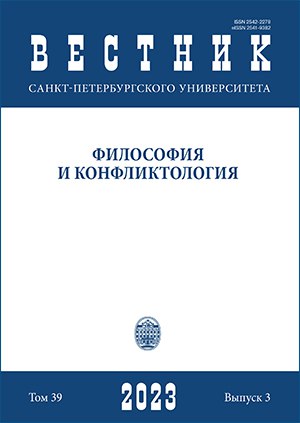The Invisible Enemy: From Metaphor to Concept
DOI:
https://doi.org/10.21638/spbu17.2023.301Abstract
The problem, the solution of which this article is devoted to, is related to the lack of special studies of the concept of “invisible enemy” in political philosophy. Existing theoretical works do not pay enough attention to this concept. Its metaphorical use fails to make explicit all of its potential and importance for political philosophy. As “invisible enemies” only in the metaphorical sense of this term can be regarded objects that have a non-anthropogenic nature (viruses, bacteria, sources of disease), as well as extraneous elements of the political body that have destructive potential. The analysis carried out revealed two semantic areas of using the concept of “invisible enemies”, relevant to political philosophy, and namely physical and symbolic invisibility. The physical invisibility, which is regarded in the works by Сarl von Clausewitz, Сarl Schmitt, Zygmunt Bauman, Grégoire Chamayou and others, belongs to enemies on the battlefield or to remote warfare. Russian philosophers look at this concept from an ethical perspective (Vladimir Solovyov, Lev Karsavin, Nikolai Berdyaev, Fyodor Stepun). The author of the article substantiates the thesis about the situational and relative nature of the phenomenon of the invisible enemy, associated with reaching the limit of perceptual indistinguishability. The physical invisibility of the enemy is caused by the appropriation of new war spaces in which vertical dimensions are established. Arguing with the ideas of Carl Schmitt, the author uses this concept not only in relation to the irregular fighters (partisans), but also in relation to modern combatants. The ways of acquisition of the symbolic invisibility are revealed in the works of Francis Bacon, Thomas Hobbes, Carl Schmitt. It is based on the transfer of the war actor to a different semantic field, in which it is depoliticized and re-symbolized as a civilian object.
Keywords:
invisible enemy, politics, war, enmity, space, body
Downloads
References
References
Downloads
Published
How to Cite
Issue
Section
License
Articles of "Vestnik of Saint Petersburg University. Philosophy and Conflict Studies" are open access distributed under the terms of the License Agreement with Saint Petersburg State University, which permits to the authors unrestricted distribution and self-archiving free of charge.






